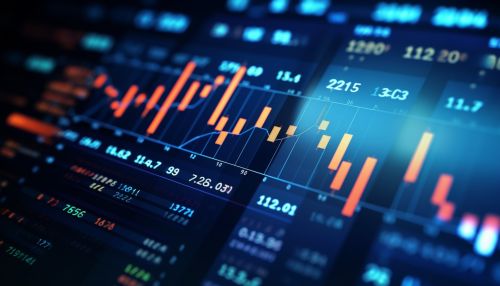Lagging indicators
Overview
Lagging indicators are a set of economic factors that change after the overall economy has already begun to follow a particular trend. They are often contrasted with leading indicators, which can signal future events. Lagging indicators confirm long-term trends, but they do not predict them. Some of the most common lagging indicators include unemployment, corporate profits, and labor cost per unit of output.
Understanding Lagging Indicators
Lagging indicators are economic factors that change only after an economy has begun to follow a new trend. They are used to confirm that a new economic trend has occurred and is not just a temporary blip. Because they come after the fact, lagging indicators are often overlooked by investors and economists in favor of leading indicators, which are seen as more useful for predicting future events.
However, lagging indicators have their own value. They provide the statistical backing that a certain change in the economy has occurred and that a new trend is underway. This can be useful for those who want to understand why a change occurred or for those who want to see the proof of a trend before they believe in it.


Examples of Lagging Indicators
There are many different lagging indicators that economists look at. Some of the most common include:
1. Unemployment: Unemployment is a lagging indicator because it tends to increase after an economy has already begun to slow down. When the economy is doing well, companies will hire more workers to keep up with demand. However, when the economy starts to slow, companies will start to lay off workers, causing unemployment to rise.
2. Corporate Profits: Corporate profits are another lagging indicator. They tend to rise during good economic times and fall during bad times. However, the change in corporate profits comes after the change in the overall economy. This is because companies report profits quarterly, so any change in the economy will be reflected in corporate profits a few months later.
3. Labor Cost Per Unit of Output: This is a measure of how much it costs a company to produce one unit of a product. It is a lagging indicator because it tends to rise after the economy has already begun to slow. When the economy is doing well, companies can afford to pay their workers more. But when the economy slows, companies will try to cut costs, which can lead to a rise in labor cost per unit of output.
Importance of Lagging Indicators
Lagging indicators are important for a few reasons. First, they help confirm that a new economic trend is in place. This can be useful for investors who want to make sure that a new trend is not just a temporary blip before they decide to invest based on that trend.
Second, lagging indicators can help explain why an economic change occurred. For example, if the economy is slowing down, a rise in unemployment can help explain why. This can be useful for policy makers who are trying to understand why the economy is behaving the way it is.
Finally, lagging indicators can provide a sense of how long a current economic trend is likely to last. If a lagging indicator like unemployment is still rising, it could suggest that the economy is still in a downturn and that the downturn is likely to last for some time.
Limitations of Lagging Indicators
While lagging indicators can be useful, they also have their limitations. The main limitation is that they do not predict future trends. They only confirm trends that have already begun. This means that by the time a lagging indicator has confirmed a new trend, it may be too late for investors to take advantage of that trend.
Another limitation of lagging indicators is that they can be influenced by a variety of factors. For example, unemployment can rise for a variety of reasons, not just because the economy is slowing down. This can make it difficult to interpret what a rising unemployment rate really means.
Finally, lagging indicators can sometimes be misleading. For example, if a company is cutting costs and laying off workers, it could lead to a temporary increase in profits. However, this does not necessarily mean that the company is doing well. In fact, it could be a sign that the company is in trouble.
Conclusion
Lagging indicators are a valuable tool for understanding the economy. They can confirm that a new economic trend has begun, explain why an economic change has occurred, and provide a sense of how long a current economic trend is likely to last. However, like all economic indicators, they have their limitations and should be used in conjunction with other types of indicators to get a complete picture of the economy.
